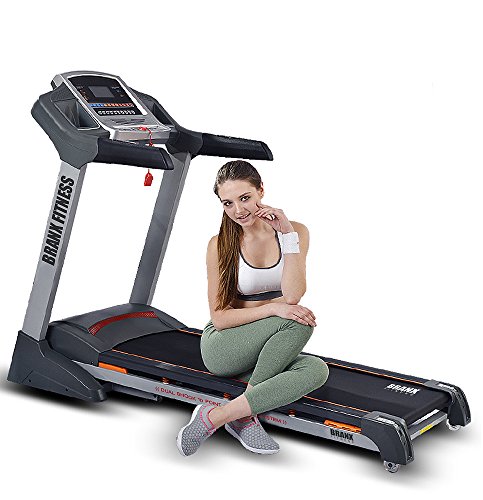Discovering the Manual Incline Treadmill: A Comprehensive Guide
As the fitness market constantly evolves, with brand-new gadgets and makers hitting the marketplace, one tool has stayed a staple in lots of homes and fitness centers: the treadmill. Particularly, the manual incline treadmill uses a special method to cardiovascular fitness training. This guide dives into the functions, advantages, and considerations of using a manual incline treadmill.
What is a Manual Incline Treadmill?
A manual incline treadmill is a non-motorized treadmill that needs users to power their movement by walking or operating on the belt. Unlike traditional treadmills, which count on electrical power to move the belt, manual incline treadmills depend entirely on the user's energy. The incline setting, which can be changed, helps imitate uphill running, supplying a reliable workout.
Secret Features of Manual Incline Treadmills
| Feature | Description |
|---|---|
| Manual Operation | Users must propel the belt themselves, making it a self-paced exercise. |
| Adjustable Incline | Incline settings can be changed, providing differed resistance for a tougher obstacle. |
| Compact Design | Frequently more light-weight and compact than motorized treadmills, making them much easier to keep. |
| Long lasting Construction | Typically developed with sturdy materials, created to hold up against strenuous use. |
| Digital Display | Some designs may feature a standard digital display to reveal time, distance, and calories burned. |
Benefits of Using a Manual Incline Treadmill
1. Improved Cardiovascular Fitness
The manual incline treadmill successfully elevates heart rate, causing improved cardiovascular health. The incline setting needs more effort from the muscles, thus increasing the overall workout intensity.
2. Personalized Workouts
With manual treadmills, users have full control over their rate and incline. This function enables them to personalize workouts to align with physical fitness objectives, whether focusing on endurance building or interval training.
3. Lower Operating Costs
Manual incline treadmills do not need electricity, making them an economical alternative to conventional treadmills. This affordable aspect attract those seeking to improve their home fitness center without sustaining high energy expenses.
4. Engaging Full-Body Workout
Running or walking on an incline engages multiple muscle groups, consisting of the legs, glutes, and core. This total-body activation assists tone and reinforce the body while burning extra calories.
5. Decreased Risk of Injury
The low-impact nature of a manual incline treadmill can be less taxing on the joints compared to high-impact aerobic workouts. Nevertheless, users should still practice good kind and begin gradually to reduce the threat of strains or injuries.
Considerations When Using a Manual Incline Treadmill
Safety First
While manual incline treadmills have many advantages, there are some security considerations to keep in mind:
- Falling Hazard: Since users move the belt themselves, it is necessary to maintain a constant rate to avoid losing balance.
- Incline Levels: Adjusting the incline during use can be difficult and needs cautious attention to preserve stability.
Appropriate Form and Technique
To optimize the benefits while reducing the risk of injury, users must highlight correct running or walking form. This consists of keeping the back straight, shoulders relaxed, and arms in a natural position.
How to Choose the Right Manual Incline Treadmill
Selecting the best manual incline treadmill is paramount to achieving physical fitness goals. Below are key factors to consider:
| Criteria | Recommendations |
|---|---|
| Weight Capacity | Guarantee the treadmill can support your weight; a lot of have capabilities ranging from 250 to 400 pounds. |
| Adjustability | Try to find treadmills with multiple incline settings to offer exercise variety. |
| Mobility | Think about foldable designs if storage area is limited. |
| Comfort Features | Look for non-slip surface areas and cushioned running locations to enhance comfort. |
Often Asked Questions (FAQ)
1. How do I keep a manual incline treadmill?
To maintain a manual treadmill, regularly examine the belt for wear and ensure it runs efficiently. Tidy the frame and running surface, and check the bolts and screws for indications of loosening.
2. Is a manual incline treadmill suitable for newbies?
Yes, manual incline treadmills can be suitable for novices. Users can start at a slow rate and slowly increase strength. However, it's vital to comprehend one's fitness level and start thoroughly.
3. Can I perform interval training on a manual incline treadmill?
Absolutely. Home Treadmills enables users to produce different workouts, best for interval training. Alternate between walking and performing at various inclines to keep exercises engaging and challenging.
4. Is a manual incline treadmill quieter than a motorized one?
Yes, due to the lack of a motor, manual incline treadmills usually run more silently, making them an outstanding choice for shared areas.
5. How much space do I require for a manual incline treadmill?
Manual incline treadmills typically occupy less space than motorized models. Nevertheless, users need to guarantee there's adequate space for movement around the treadmill for security.
The manual incline treadmill uses an unique blend of benefits and versatility, making it an excellent choice for those seeking to boost their exercise regimen without depending on electrical power. From improved cardiovascular physical fitness to adjustable training alternatives, it provides a comprehensive method to fitness. By understanding its features, benefits, and safety considerations, users can choose the ideal design and incorporate it effectively into their exercise routine. Whether used in a home gym or a bigger physical fitness facility, a manual incline treadmill can be an indispensable tool for those concentrated on health and wellness.

